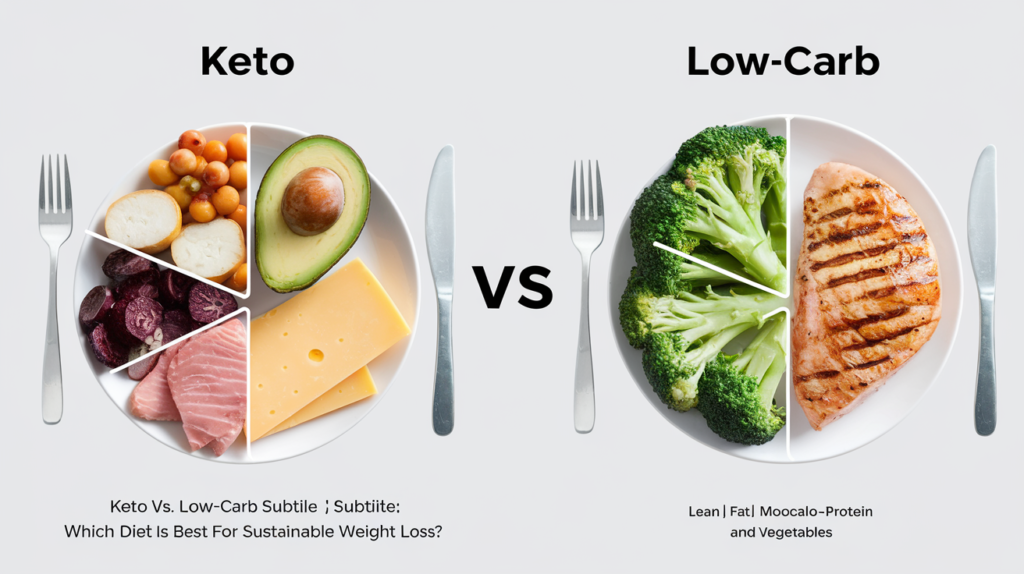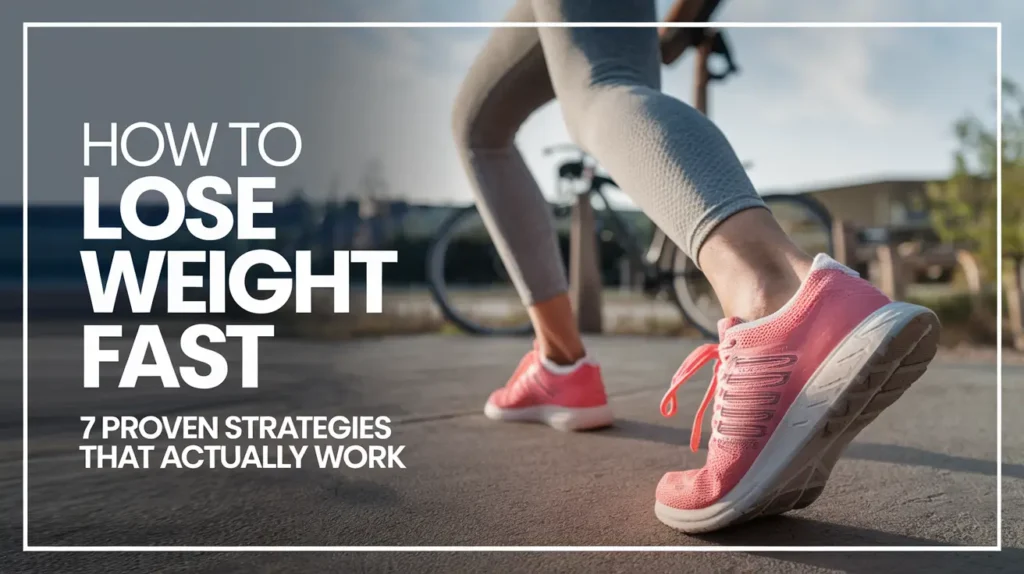When it comes to weight loss, the internet is buzzing with diets promising rapid results. Two of the most popular options you’ll stumble upon are the ketogenic (keto) diet and low-carb diets. But how do you decide which one is right for you? In this comprehensive guide, we’ll break down both diets, their benefits, and drawbacks, and help you figure out which might be the best fit for sustainable weight loss. Let’s dig in!
What is the Keto Diet?
The keto diet is all about drastically reducing your carbohydrate intake and replacing it with fat. This shift puts your body into a metabolic state called ketosis, where it becomes incredibly efficient at burning fat for energy. Sounds great, right?
How Does Keto Work?
In a typical keto diet, you’ll aim for a macronutrient ratio of about 70-75% fats, 20-25% protein, and only 5-10% carbohydrates. Imagine your body as a car that runs on different fuels; when you switch from petrol (carbs) to diesel (fat), you need to give it time to adjust.
Foods to Eat on Keto
- Healthy Fats: Avocados, nuts, seeds, and olive oil.
- Proteins: Eggs, fatty fish, and grass-fed meats.
- Low-Carb Veggies: Leafy greens, zucchini, and bell peppers.
- Dairy: Cheese, butter, and heavy cream (in moderation).
Foods to Avoid on Keto
- Sugary foods (bye-bye, sweets!)
- Grains and starches (think rice and bread)
- Fruits (most are too high in sugar)
- Beans and legumes
What is a Low-Carb Diet?
On the flip side, a low-carb diet also restricts carbohydrate intake but not to the same extent as keto. It focuses more on reducing carbs while still allowing for a broader range of foods.
How Does Low-Carb Work?
A typical low-carb diet might consist of about 30-40% carbs, allowing for more flexibility. You can still enjoy some fruits and whole grains while focusing on protein and healthy fats.
Foods to Eat on Low-Carb
- Lean Proteins: Chicken, turkey, and fish.
- Healthy Fats: Nuts, olive oil, and avocados.
- Low-Carb Vegetables: Spinach, cauliflower, and broccoli.
- Whole Grains (in moderation): Quinoa and oats.
Foods to Avoid on Low-Carb
- Sugary snacks and desserts
- White bread and pasta
- High-carb vegetables like potatoes
Keto vs. Low-Carb: Key Differences
1. Carb Restriction
The most obvious difference is the level of carb restriction. Keto is much stricter. If you’re the kind who loves your rice and chapatis, a low-carb diet might be more sustainable for you.
2. Ketosis
While on a keto diet, you actively aim to reach ketosis, which isn’t the case with low-carb diets. In low-carb, you may still consume enough carbs to prevent your body from entering this state.
3. Flexibility
Low-carb diets are generally more flexible, allowing for a broader food selection. This can make sticking to the diet easier for many people.
Benefits of the Keto Diet
1. Quick Weight Loss
Many people experience rapid weight loss on keto, especially in the initial stages. It’s like dropping a heavy backpack right off your shoulders!
2. Reduced Hunger
Keto can help reduce hunger levels due to higher fat intake, making it easier to manage cravings.
3. Increased Energy Levels
Once your body adapts to burning fat, many report a boost in energy levels and mental clarity.
4. Improved Blood Sugar Levels
For some, the keto diet can lead to improved blood sugar control, which is particularly beneficial for those with diabetes.
Drawbacks of the Keto Diet
1. Keto Flu
When starting, some people experience flu-like symptoms, often referred to as the “keto flu.” This is your body adjusting to a new way of eating.
2. Restrictive Nature
The strict limitations can make social eating or dining out challenging. Who wants to be that person at a dinner party asking if the food is keto-friendly?
3. Nutrient Deficiencies
Long-term adherence may lead to deficiencies in certain vitamins and minerals, especially if you’re not careful with your food choices.
Benefits of Low-Carb Diets
1. More Variety
You can enjoy a wider range of foods, which can make it easier to stick to in the long run.
2. Simplicity
Low-carb diets are generally easier to understand and implement, especially if you’re new to dietary changes.
3. Better for Social Situations
With more flexibility, you’ll find it easier to eat out or join in on family meals without feeling like an outcast.
Drawbacks of Low-Carb Diets
1. Slower Weight Loss
You might not see results as quickly as on a keto diet, but remember: slow and steady wins the race!
2. Possible Cravings
Since low-carb diets are less restrictive than keto, some people might find it easier to give in to cravings.
Which Diet is More Sustainable?
When it comes to sustainability, it really boils down to your lifestyle and personal preferences.
1. Personal Preference
If you love carbs and can’t imagine life without your favorite breads or pastas, a low-carb diet may be more suitable for you.
2. Long-Term Commitment
Ask yourself: “Can I see myself doing this in a year?” If the answer is no, it might be worth reconsidering.
3. Health Considerations
Consider any health conditions you may have. For some, a low-carb diet might be a better choice, while others could thrive on keto.
Tips for Success on Both Diets
1. Meal Prep
Planning your meals ahead of time can keep you on track and make it easier to avoid temptations.
2. Stay Hydrated
Water is your best friend. Staying hydrated can help with hunger and cravings.
3. Listen to Your Body
Pay attention to how your body responds to either diet. If you feel fatigued or unwell, it may be time to adjust your approach.
4. Seek Support
Whether it’s a friend, family member, or an online community, having support can help you stay motivated.
Can You Combine Both Diets?
Interestingly, some people find success by combining aspects of both diets. For example, you might start with a keto approach to kick-start weight loss and then transition to a more flexible low-carb diet for long-term sustainability.
Conclusion
So, which diet is better for sustainable weight loss? It truly depends on your individual preferences, lifestyle, and health goals. Both the keto and low-carb diets have their merits, but the key is finding what works best for you. Remember, the most effective diet is one that you can maintain in the long run without feeling deprived or overwhelmed. So grab a plate, listen to your body, and enjoy the journey towards a healthier you!
FAQs
1. Can I lose weight on a low-carb diet without exercising?
Yes! Many people lose weight on a low-carb diet even without exercise. However, incorporating physical activity can enhance your results.
2. Is the keto diet safe for everyone?
Not everyone should follow a keto diet, especially those with certain medical conditions. Always consult with a healthcare professional before starting any new diet.
3. How long does it take to enter ketosis?
Typically, it takes 2-4 days of strict carb restriction to enter ketosis, but this can vary based on the individual.
4. Can I have cheat days on these diets?
While it’s possible to have cheat days, they can disrupt your progress, especially on keto. It’s essential to find a balance that works for you.
5. Are there any side effects of low-carb diets?
Some people may experience fatigue or digestive issues when switching to a low-carb diet. Always listen to your body and adjust as necessary.



